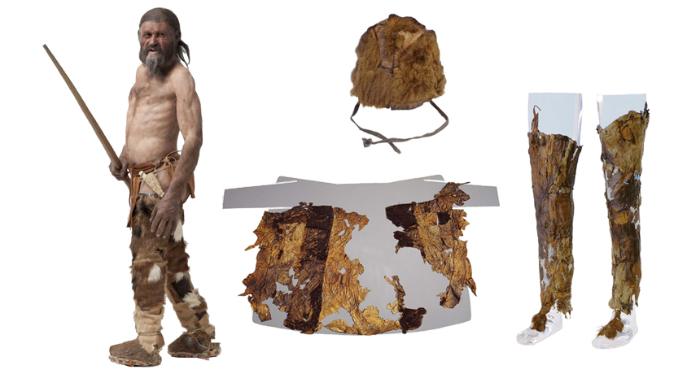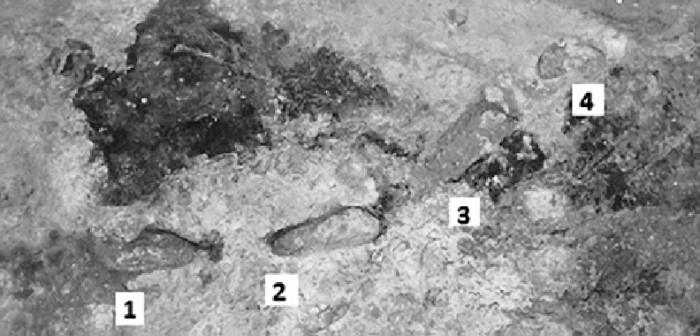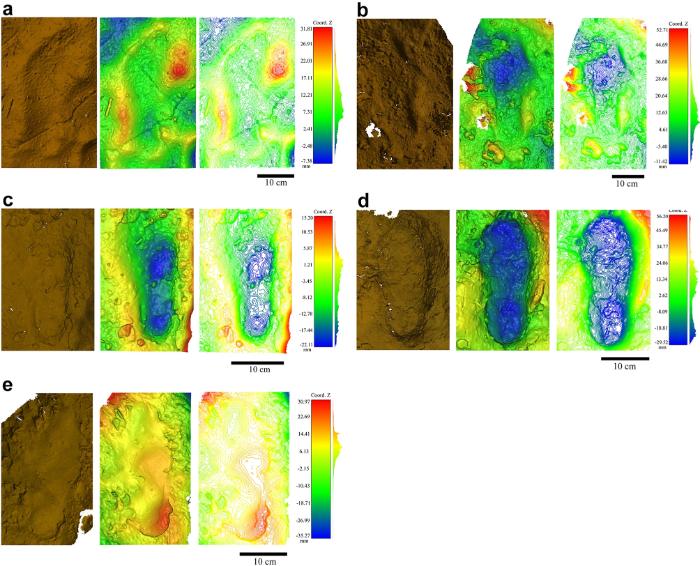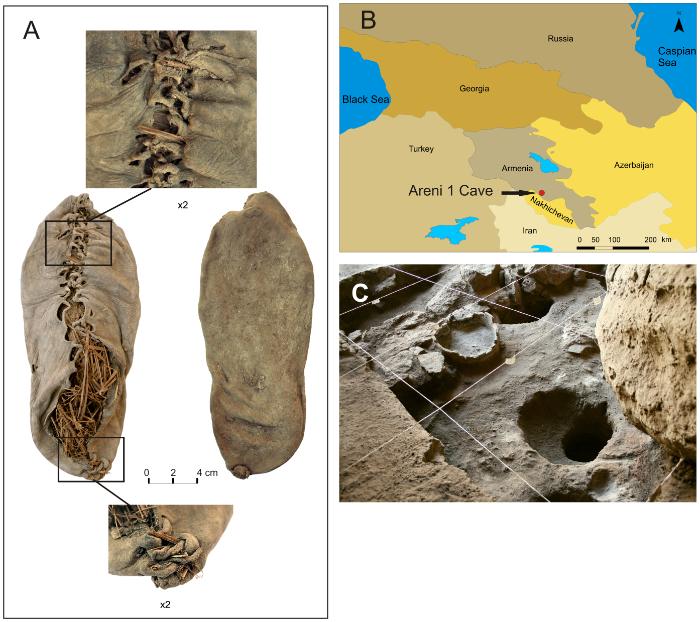For archaeologists interested in the history of clothes and footwear, a major roadblock is presented by the great fragility of the remains. Even so, there are a few unusual findings, usually in the form of traces or prints or extremely tenuous inferences about their likely existence. But it looks like ancient clothing must be a daily practice of our ancestors, even though we lack the clarity to track their evolution. Let’s interpret the evolution of prehistoric clothing.
They decompose rapidly
Clothing does more than only keep us safe; it also stamps us as individuals in both history and the present. As well as its practical uses, clothing also have social and symbolic purposes. The diachronic history of clothing is essential for the prehistoric anthropologist, since it documents the transition from one style to the next, the acculturation of one group by another at a specific period, and the acceptance or imitation of new clothing conventions.
Despite being ubiquitous in modern society, clothes and footwear technologies are notoriously difficult to unearth in archaeological digs due to their rapid decomposition. This is the beauty and the sorrow of Paleo-Mesolithic archaeology: with very few exceptions, we have only a little evidence of the existence of soft and worked materials derived from animals (fur, skins, leathers, ties) or plants (braided fibers, sewed threads).

The so-called iceman Ötzi was discovered with a leather quiver, leather clothes, and fur headgear. However, it was sometimes impossible to establish the origin of the components due to their advanced state of degradation. Since no clothing remnants have been directly passed down to us, we can only highlight a few unusual findings, frequent traces, prints, or extremely indirect conclusions of their likely existence.
Adaptation to the cold
The tropics and the equator are known for their high rates of near-naked inhabitants (Fuegians), yet this extreme lifestyle is not limited to those places. Covering up is primarily an adaptation to the cold that occurred simultaneously with the spread of hominins to the high latitudes of the Northern Hemisphere.
According to anthropologists, the lack of fur might be the driving factor in the development of clothing. This would have been the beginning of the evolution of complex shapes better fitted to withstand the cold among human communities, which would have occurred in tandem with the development of more specialized tools.
“Paleo-lice” for the evolution of clothing
Lices are a particularly useful hint since they are indirect and unanticipated. The systematic wearing of clothes appears to be originated in the Middle Paleolithic period in North Africa, according to genetic analyses of human body lice and their derivation from head lice.
The genetic analyses of lice in clothes enable us to determine the time period in which humans might have acquired clothes first, which is anywhere from 84,000 to 107,000 years ago (the start of the latest ice age or the Last Glacial Period) or perhaps the preceding ice age cycle (170,000 years ago).
Miniature traces left on fabric
The Ötzi mummy, found by stupefaction in the Ötztal Alps on the Italian-Austrian border in 1991, is one of the most extraordinary findings of prehistory, or more accurately, the Late Neolithic. Incredibly, the fully attired man was only dated between 3300 and 3350 BC.
In Georgia’s Dzudzuana cave, wild flax fibers and bovid hair dating back between 31,000 and 13,000 years were found. And weaving baskets or making clothes out of these fibers would have been possible.
Other forms of indirect evidence, such as prints or imprints of clothes, give detailed information about prehistoric sartorial habits. Although such evidence is difficult to come across, when it does it allows us to see how people’s lives, fashions, and social mores have changed through time.
Thus, there are textile imprints found on the pieces of baked clay at Pavlov and Dolni Vestonice (Czech Republic) between 31,000 and 30,000 years ago. Exciting summaries of this topic have been produced by American anthropologists sometime ago (PDF).
Also, there are impressions of what could be fur clothing in the Wahl Gallery of the Fontanet Cave (in France) from the Magdalenian period and dated to 14,000 years ago.
The earliest prehistoric shoes

And what about the first shoes, or possibly the sandals? Children’s shoeprints from 135,000 years ago, when Neanderthals were expanding across Europe, were preserved in Greece’s Theopetra Cave.
Scientists investigated the footprints of a group of Gravettians who visited the Dordogne cave of Cussac about 30,000 years ago and left tracks in the clay floor of the cave. Experiments led them to conclude that the shoes were worn, thus it was concluded that naked feet were not present in the area.

Given the technological sophistication of these cultures and the periglacial environment of the recent Paleolithic, the presence of bare feet would actually look peculiar.
Multiple sites in West America (Oregon, Nevada, California) have yielded a large number of plant-fiber sandals that have been dated to the late Pleistocene/early Holocene. The Paleo-Indian braided sandal, which dates back to between 10,000 and 11,000 years ago (Fort Rock Cave, Elephant Mountain Cave), has been documented by a number of scholars, some of whom have even proposed a typology and geography of the footwear.
Examples like these are few during the Paleolithic eras in Europe. The Areni-1 Cave in Armenia yielded the first direct examples of “archaeological” shoes in Europe, dating back to between 3627 and 3377 BC, similar to the age of Ötzi (5,300 years old) and other indirect imprints.

Tools for making clothes
Even if the clothing’ fibers deteriorate and disintegrate over time, the equipment used to produce them can still provide useful information. The first clothes were likely made between 120,000 and 90,000 years ago, as shown by an examination of bone tools discovered in Morocco’s Smugglers’ Cave.
To be sure, early modern humans, like their Neanderthal counterparts, understood the manipulation of skins to change them into leather (“proto-tanning”) or their direct usage as fur, as shown by the caves at Pech de l’Azé I, Combe-Capelle, Dordogne (60,000–45,000 years old).
While these early implements are not direct proof that real clothes were being made, they do show that skins were being worked and used in various ways to cover the body and decorate dwellings. The remains of carnivores that were killed and skinned rather than eaten, point in the same general direction.
Yet, there is one of these indirect technical hints—the eyed needle—that definitively shows that clothing was made: A needle and thread can be threaded through the openings, allowing the user to stitch together two pieces of fabric to create a garment or blanket. This tool, whose shape and purpose have not altered since the Paleolithic era (albeit the material, currently steel, was bone back then), was first reported in a limited sense in Europe during the Solutrean period, some 24,000 years before the present.
It has been stated that an even earlier object, from the Denisova cave in the Russian Altai, dates back 45,000 years. However, this figure is still up for question.
The funerary adornment sewed on clothes
On the other hand, the beads that were strung on garments back in the day have survived to this day because they were constructed of durable materials like bone, ivory, and stone. They testify to the use of first sewed and embroidered clothing and bonnets with the remains of the dead in their original location.
One of the most remarkable pieces of evidence of the use of clothing is found in the lavish graves of Sungir (near Wladimir, 118 mi / 190 km east of Moscow, Russia). We can only marvel at the wealth and ingenuity of these burial clothes after seeing the intricate arrangement of thousands of beads found on the bodies of Sungir’s dead, whose dates vary from 34,500 to 32,600 years.
Similarly, the remarkable headgear stitched with hundreds of beads and found in the double grave in Grimaldi (Children’s Grotto), Italy, dates back 14,000 to 15,000 years.
Paleolithic art with clothing, headdresses, necklaces or bracelets

Numerous sculptures and engravings show the use of textiles or what can be textiles, such as headdresses or bracelets. Certain female figurines, often referred to as “Venus,” have been successfully dated to the Gravettian era, namely the latter stages of the period’s middle and later periods (31,000 to 26,000 years ago).
This includes the statuettes from Willendorf (Austria) and the Czech or Russian equivalents from Dolni Vestonice, Pavlov, and Kostyonki, as well as Brassempouy and the bas-relief sculptures from Laussel (France). In place of stylish hair, they seem to be wearing some kind of headdress, bonnet, or mesh covering on their heads.
Belts are seen being worn by one of the female Cussac figures (Kostyonki), and necklaces and bracelets are also shown. The Mal’ta and Buret’ statuettes from Siberia, west of Baikal in Russia, date back just 23,000 years; they are fully clothed, suggesting the use of sophisticated clothing if not tattoos or scarification.
Images of similar adornments, often on nude bodies, are likewise well-known to the Magdalenian culture (in the Isturitz cave, in the Basque Country, and in the Laugerie-Basse shelters, in the Dordogne, in particular).
This evidence and findings demonstrate a fundamental truth: clothing production is a prehistoric activity, possibly practiced by several human species, and which has evolved through time. So far, the most impressive Paleolithic artifacts regarding the earlier clothes and shoes are located in Russia and Siberia.
Over time, clothing has evolved to reflect several demographics, temporal, and social characteristics of a given human population, social group, or culture beyond its original, solely defensive role. Especially if we count the embellishments on the garments.






